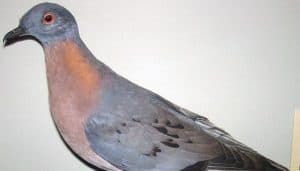

And yet Colossal seems confident, saying it hopes to de-extinct Tasmanian tigers by 2025 and woolly mammoths by 2027. Nor have any other scientists, unless you count the team that cloned the Pyrenean ibex in 2003 – but that clone died within minutes.

PASSENGER PIGEON DE EXTINCTION 2021 HOW TO
Nor would it have any other dodos to teach it how to act like and, well, actually be a dodo.Ĭolossal hasn’t successfully created any de-extinct creatures yet. Then they could put that genome into an egg cell, and let that egg develop into an organism that should look like a dodo.īut that organism wouldn’t be genetically identical to the dodo.
PASSENGER PIGEON DE EXTINCTION 2021 FULL
Scientists would edit the genomes of the dodo’s closest living relative – the Nicobar pigeon, which contains the pigeon’s full set of DNA – and add some of the most important dodo genes, taken from preserved dodo remains. Rather than “bringing back” lost species, it’s more of a process to create their high-tech look-alikes. What de-extinction is and isn’tĭe-extinction is not exactly what it sounds like. One of us, Ben, is a professor of environmental ethics who explores the ethics of de-extinction in his 2018 book “ The Fall of the Wild.” The other, Risa, is a doctoral student researching how de-extinction might change public perceptions about extinction, especially its emotional impact. The company says its goal is to create a population of undead dodos to put on the Indian Ocean island of Mauritius, where the hefty, flightless creatures lived before humans drove them to extinction in the late 1600s.Īs environmental humanists, we study the morality of different conservation interventions, and are interested in how de-extinction might change the ways people think about their responsibilities toward nature. What can scientists possibly do to stop that trend? For some, the answer is to “de-extinct.”Ĭolossal, a biotechnology company that garnered headlines for its plan to “de-extinct” the woolly mammoth, is now attempting to “bring back” the famously dead dodo bird.


 0 kommentar(er)
0 kommentar(er)
